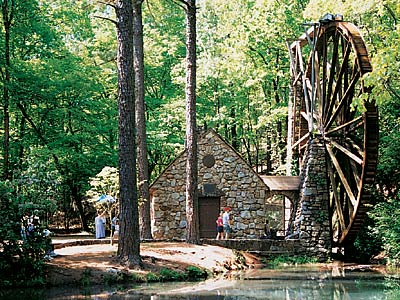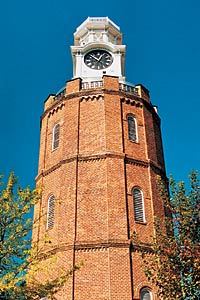That Natural Beauty of Rome; Georgia That Is

All roads do not lead to Rome… Georgia. But they should!
My husband and I knew this friendly community is considered one of the South's best small towns. And after visiting, we agree wholeheartedly. We were amazed at the variety of things to see and do–historic attractions, cultural events and recreational activities galore.
But what really caught our eye was Rome's natural beauty. Nestled in the foothills of northwestern Georgia, Rome is surrounded by seven hills (just like its more prominent Italian namesake) and the Coosa, Etowah and Oostanaula Rivers. It's a hidden gem!
We learned all about Rome's rich heritage during our visit. Its location amid three rivers made it a thriving commercial hub for steamboats in the 1800s. During the Civil War, however, Union troops burned down much of the town–but not its spirit.
Residents slowly rebuilt, and today the town looks much as it did back then. Broad Street is the state's second-widest main street, and the town is dotted with gracious Victorian homes, lovely old churches and fine old buildings.
We enjoyed browsing through antique shops and other stores on Broad Street. Amiable shopkeepers made us feel right at home.
Amble Back into Time
Don't miss the walking tour of Victorian homes–the Visitor Center offers maps or narrated cassette tapes for driving tours. We thought this would be a quick activity, but we spent hours strolling the streets, feeling as though we'd stepped back in time.
While you're in town, be sure to see the 100-foot-tall Old Town Clock, a former water tower that's listed on the National Register of Historic Places. Standing atop one of the town's seven hills, the ornate four-faced clock–installed in 1872–and its immense 9-foot-diameter faces are a striking sight, visible from just about anywhere in town.
If you're up to it, head inside the tower and climb the 107-step spiral staircase to an observation deck for a panoramic view of the city.

Oak Hill Plantation and the Martha Berry Museum are two more must-see attractions. The estate was built in 1847 for Martha Berry, who later founded Rome's Berry College. It was a real treat to visit this classic Southern plantation, which includes gorgeous gardens. And the adjacent museum opened our eyes to the achievements of Martha Berry, a remarkable educator.
Nearby is 28,000-acre Berry College. We took a driving tour of the spectacular campus, set amidst forests, fields and lakes. We stumbled upon an old gristmill in the campu's thick woods and were amazed by the tranquility of this spot. The gristmill alone is worth the drive!
We also were impressed by the town's cultural offerings. There are numerous festivals held year-round, a local symphony (founded in 1921, it's the South's oldest) and a couple of theaters that produce musicals and other plays.
I could go on and on about this magnificent little city, but the only way to truly experience this town is to visit yourself.
Trust me, you'll feel right at home in Rome!
Before You Visit
Rome is about 65 miles northwest of downtown Atlanta, where U.S. Highways 27 and 411 and State Highway 20 meet. To learn more, call the Greater Rome Convention and Visitors Bureau at 1-800-444-1834.
For more information about Oak Hill Plantation and the Martha Berry Museum call 1-800-220-5504.
More to See
Quaint cave Spring, a town that features a natural spring and antique stores, is about 18 miles southwest of Rome on Highway 411.



Leave a Reply